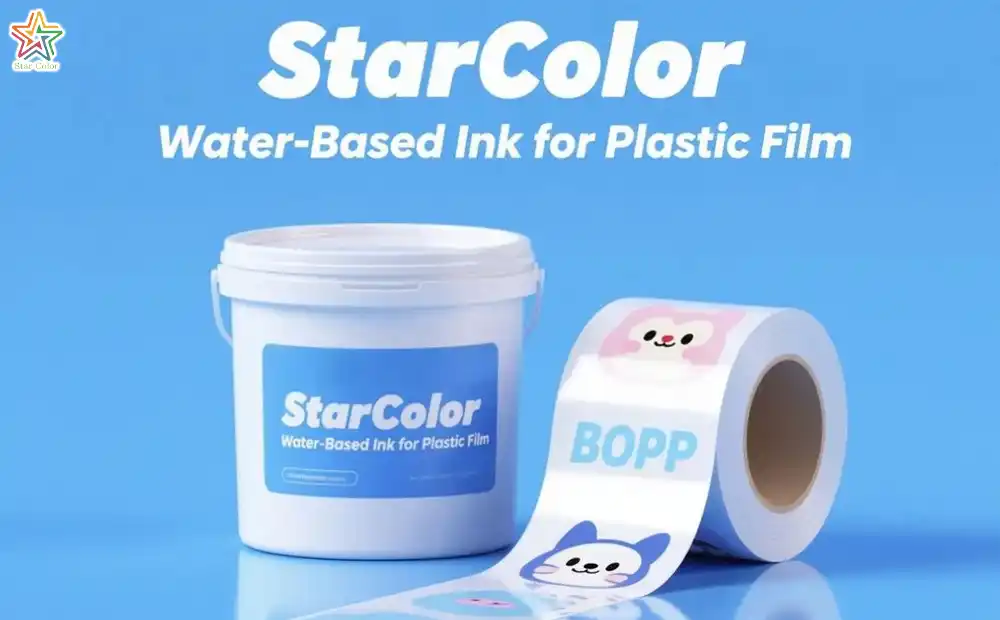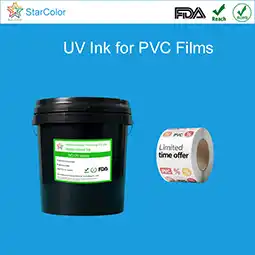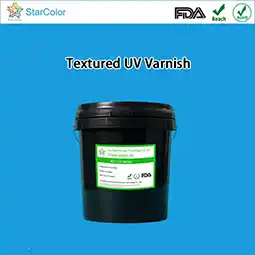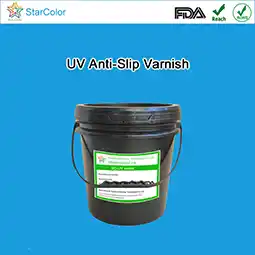Improving Coverage of Water-Based Flexographic Inks on Non-Absorbent Substrates
Date: Aug 21 2025 From: Star Color Views:
Industry data show that the initial coverage rate of water-based inks on non-absorbent substrates (such as BOPP, PET, PE films, and aluminum foils) is often below 85%, significantly lower than the 95%+ coverage achieved on absorbent substrates. The main reason is that these substrates have smooth, non-porous surfaces, unlike paper, which absorbs ink and helps adhesion. As a result, water-based flexographic inks frequently suffer from issues such as “show-through, mottling, and uneven coverage.”
This article systematically analyzes technical pathways to improve coverage from three perspectives: ink formulation optimization, substrate pretreatment, and process parameter adjustment, and provides practical solutions supported by test data and case studies.
1. Causes of Insufficient Coverage
The poor coverage of water-based inks on non-absorbent substrates essentially stems from the inability of the ink to form a continuous, uniform, and sufficiently thick ink layer on a smooth surface. The main causes include:
(1) Low surface energy of the substrate limits ink wetting
Most non-absorbent substrates are non-polar materials (such as PE and BOPP) with surface tensions of only 28–32 dyn/cm. By contrast, water-based inks typically have surface tensions of 35–45 dyn/cm due to water molecules. Since the ink’s surface tension is higher than that of the substrate, proper wetting and spreading cannot occur.
(2) Poor pigment dispersion and insufficient hiding power
Pigments in water-based inks tend to agglomerate, and if the pigment concentration is too low (PVC < 25%), the ink layer cannot form a dense, light-blocking structure. Test data show that improving pigment dispersion from 80% to 95% can increase coverage by 12%.
(3) Insufficient or uneven ink layer thickness
When using high-line-count anilox rollers (e.g., >800 lpi) with a low volume (<3 BCM), the resulting ink layer thickness may be less than 1 μm, making it difficult to mask the substrate background.
2. Ink Formulation Optimization
Ink design is the foundation of improving coverage. This involves optimizing pigment selection, resin combinations, and additive adjustments to enhance hiding power and substrate compatibility.
(1) High-opacity pigment system design
-
Pigment selection and concentration control: High-refractive-index, high-tinting-strength pigments should be used. The pigment concentration (PVC) should ideally be maintained at 30–40%. Tests show that increasing PVC from 25% to 35% can raise coverage from 82% to 92%.
-
Pigment dispersion optimization: Controlling pigment particle size at 3–5 μm (with 90% of particles <8 μm) can improve opacity by over 20%.
(2) Resin and additive synergy for better wetting
-
Low-surface-tension resin blends: Modified acrylic and polyurethane resins can be blended to lower overall ink surface tension. On BOPP films, such blends increased spreading speed by 30%.
-
Flow agents: Acrylic-based leveling agents reduce surface tension gradients within the ink film, cutting “show-through” by over 80% in solid print areas.
-
Viscosity control: Using rheology modifiers to keep viscosity at 30–40 cps (25℃) ensures balanced flow and leveling without local thinning.
(3) Functional additives to enhance film density
-
Film-forming aids: Adding 5–8% can lower the minimum film-forming temperature (MFT) of the resin to below 15℃, ensuring a continuous, pore-free ink layer on the substrate.
3. Substrate Pretreatment
The surface characteristics of non-absorbent substrates directly impact ink wetting and film integrity. Physical modification and surface cleaning are critical to preparing a receptive “ink base.”
(1) Precise surface energy control
-
Optimized corona treatment: Parameters should be adjusted by substrate type to achieve:
-
BOPP/PET films: 38–42 dyn/cm
-
PE films: 36–40 dyn/cm
-
Aluminum foil: 40–45 dyn/cm
-
High-frequency corona systems (15–20 kHz) can limit surface energy variation to within ±1 dyn/cm. A company reported that raising BOPP surface tension from 34 dyn/cm to 40 dyn/cm improved coverage from 85% to 95%.
-
Plasma treatment: For difficult-to-treat substrates such as PE, plasma treatment introduces polar groups (hydroxyl, carboxyl) by high-energy bombardment. This can increase surface polarity by 3–5× and significantly improve ink wetting uniformity.
(2) Surface cleaning
-
Online cleaning systems: These remove oil residues and dust from substrates prior to printing.
-
Controlled storage: Storing substrates in clean, dry conditions (humidity 50±5%) prevents contamination by oil and moisture.
4. Case Study: Coverage Improvement in a Personal Care Packaging Company
A Chinese packaging converter faced long-standing issues with insufficient coverage when printing white solids on BOPP film labels (coverage only 83%, visible show-through, and a customer complaint rate of 15%). After implementing the following measures:
-
Ink adjustment: Increased TiO₂ PVC from 28% to 35%, used rutile-type TiO₂ (3 μm), added 1% silicone-based flow agent, and stabilized viscosity at 35 cps.
-
Substrate treatment: Increased corona power from 30 W·min/m² to 45 W·min/m², achieving 40 dyn/cm surface tension, and installed an online cleaning unit to remove slip additives.
-
Process optimization: Switched to a 400 lpi anilox (10 BCM volume), set printing pressure at 2.0 bar, and reduced press speed to 200 m/min.
-
Drying adjustment: Applied gradient drying (45℃–65℃–55℃), extended drying time to 1.5 seconds, and used low-humidity air (25% RH).
Results: White solid coverage on BOPP improved to 98%, with no visible show-through. Customer complaint rate dropped to 0.5%, scrap rate reduced from 12% to 1.8%, saving approximately USD 5,000 per month.
5. Conclusion
Improving the coverage of water-based flexographic inks on non-absorbent substrates requires a synergistic approach combining:
-
Pigment concentration and dispersion to boost hiding power,
-
Substrate pretreatment to enhance wetting and adhesion,
-
Process and equipment control to ensure consistent ink layer thickness.
Huizhou Zhongzhixing continues to focus on high-pigment water-based ink formulations, helping converters solve printing challenges on non-absorbent materials. For customized solutions, our professional team can provide tailored recommendations based on your substrate type and design requirements.
 RU
RU EN
EN CN
CN















